We paired these two turbocharged Japanese family cars to see which one is more worthy of your hard-earned moolah
Photos by Azfar Hashim
You might be an engineer, teacher, insurance agent or IT professional but when you need a reliable, Japanese family sedan that’s ‘not too big’ or ‘not too small’, the only choices you had were the Corolla Altis and Nissan Sylphy. Sounds a tad boring, true. Plus they look as exciting as bricks but at the end of the day, it does its job brilliantly; more importantly, the wife approves. And the in-laws too.
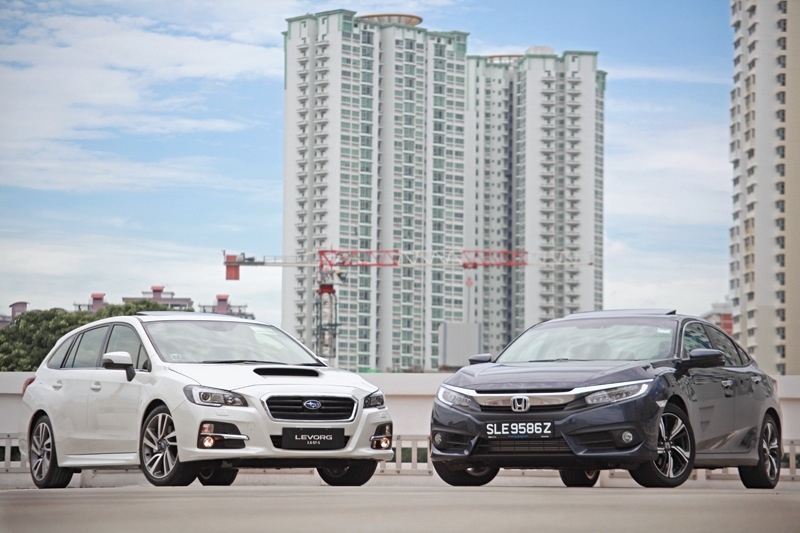
But now the Japanese are beginning to get slightly adventurous, going against their conventional norm so to speak. They’re giving us family-friendly cars with — wait for it — powaaah. Gentlemen meet the new turbocharged Honda Civic VTEC Turbo and Subaru Levorg, two cars that would also make the solo drive to and from work more entertaining.
Previously we’ve reviewed both the Subaru and then Honda separately, so now just because they’re both the only turbocharged Japanese family sedan with ‘medium-sized’ engines, we decided to bring them together for this story.
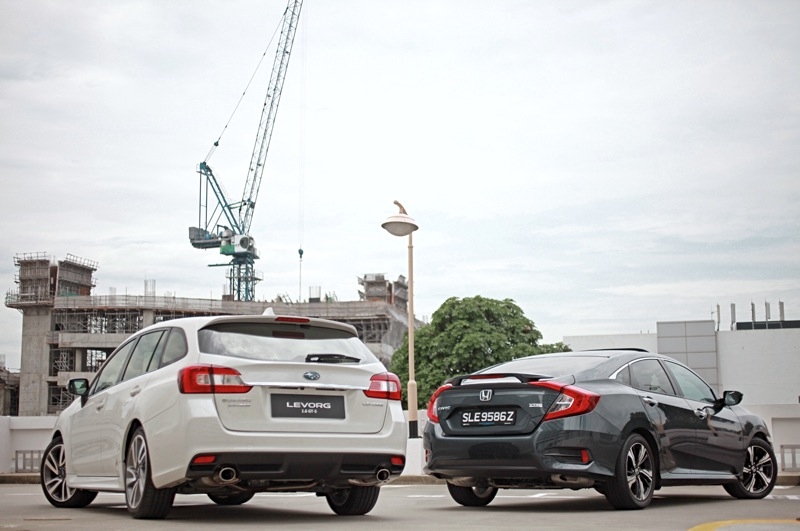
Price wise, both are not too far apart from each other as well — the Civic retails for $131k, while the Levorg about $134k (both with COE). So, which Japanese force-fed family mobile should you go for?
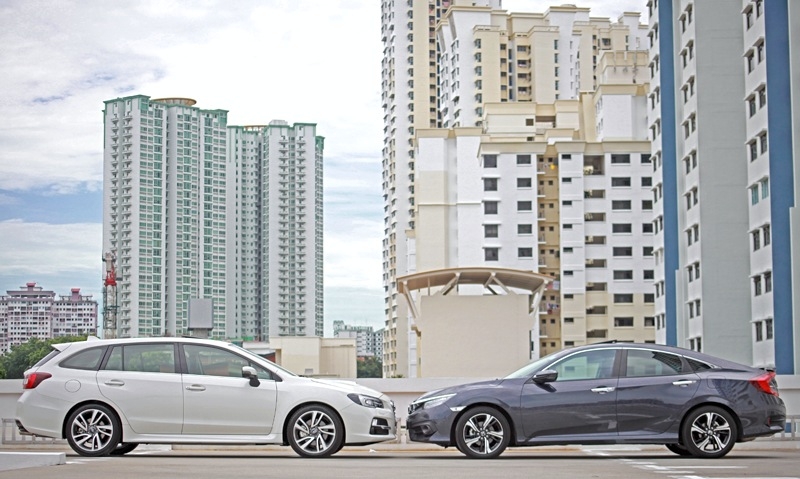
What are these?
This tenth-generation Honda Civic arrived with much fanfare and response has been healthy to date. With its predecessor not impressing local consumers, this bold looking replacement definitely is a breath of fresh air; a long time coming for its ardent fans. Shape wise Honda insisted this is a sedan despite it resembling fastbacks like the Audi A5 and BMW 4 Series Gran Coupe.
The Subaru Levorg is straight up a wagon. Styling wise, you could see how much effort had been given to make it less drab and more sensational for you speed-loving drivers who need space as you’ve outgrown the hot-hatch phase; bonnet air scoop means business. Although there is the larger 2.5-litre Outback sibling to consider, but hey, the higher road tax, insurance and maintenance doesn’t make sense if you only need maximum space 10 percent of the time — hence here in Singapore, this Levorg makes so much sense.
The downside to both cars? Despite the Civic having a 1.5-litre and the Levorg a 1.6-litre powerplant respectively, their <97 kW (130 bhp) power outputs put them into Category B; equating to a significant higher price tag than the crowd favourite Corolla Altis.
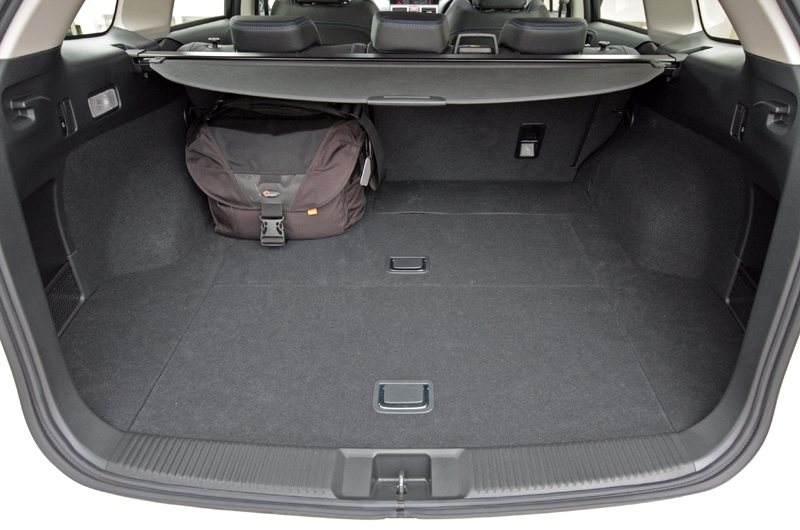
Subaru Levorg's boot can transform into van mode rather easily
How do they fare in terms of practicality?
The Levorg offers the bigger capacity between the two, with 522-litres all seats in place. The Civic on the other hand is capable of 519-litres — not a significant difference despite their different bodyshells. Surprisingly though, the Levorg’s boot is shallower than the Civic’s.
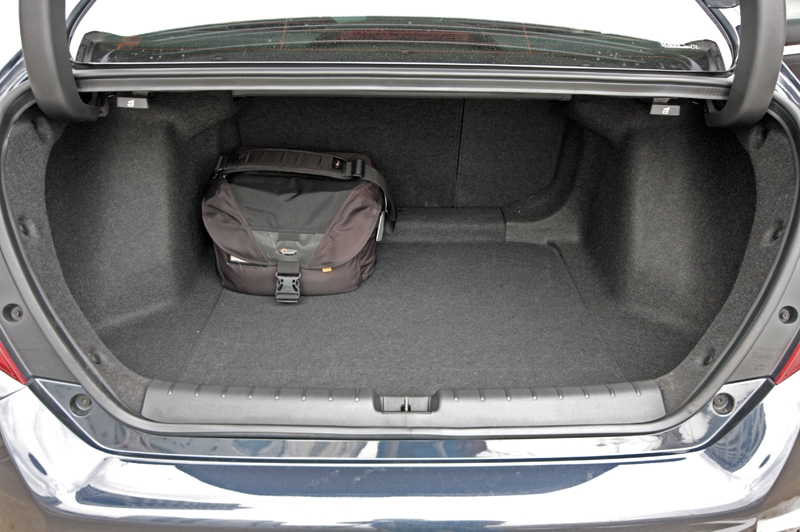
Honda Civic's boot is large by sedan standard
With all seats in place, you could fit in items that measure up to 130 cm long; in the Civic however, you could throw in items up to 140 cm. Bring the backrest down and you would be able to fit items up to 196 mm in the Levorg while for the sedan Civic, only up to 193 cm. The benefit of a wagon does show when you remove the boot cover and bring the backrest down: Items up to 119 cm wide could be thrown back there. The less flexible Civic only allows up to a 87 cm maximum.
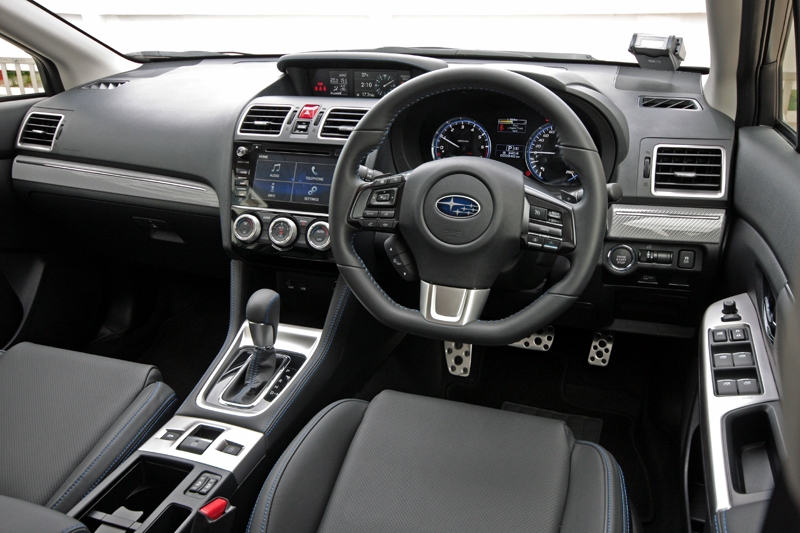
How is it inside?
While both cars’ cockpits are modern, idiot-proof and pleasing to the eye, it’s the Levorg’s that has the edge; there’s the nicer steering wheel and controls that are more driver oriented. A cool touch is the info display above the central air-con vents that display info such as time, fuel consumption, range to empty, active torque distribution, turbo boost and engine oil temperature. For the Civic, the steering wheel seems a tad big, and the buttons need to feel a little more solid. It gets a touch-screen display on the centre console like the Levorg too, but the one here is user-friendlier. Plus, you get Apple Carplay.
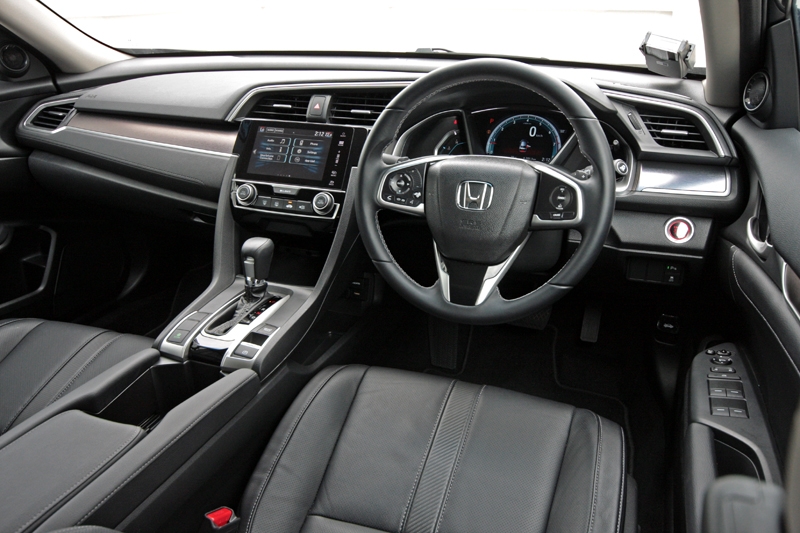
The driver’s seats are well designed but it’s the Honda’s that provides better comfort for everyday usability. The Subaru’s errs towards the sportier side of things instead, providing more hug; perfect for sporty driving as it holds you in place tightly. For the rear, it’s the Civic’s that is snugger; on top of being nicely bolstered, the backrest is perfectly angled. This in turn lets occupants feel properly cocooned. In the Levorg, the seat felt harder and the backrest’s angle just doesn’t seem right; it could be a case of personal preference, but when I’m seated at the back and not driving, I would like to feel as though I’m seating comfortably on a couch rather than a cinema’s chair.
With the front driver’s seat placed in my optimum driving position, my 168 cm frame enjoyed more leg space at the back of the Civic — while seated, there’s a gap of 22 cm from my knee cap to the front’s seatback while in the Levorg, only 17 cm. However, the Civic’s sloping roofline shows its one disadvantage here in the form of lessened headroom: It only offers 12 cm, with the Levorg 20 mm.
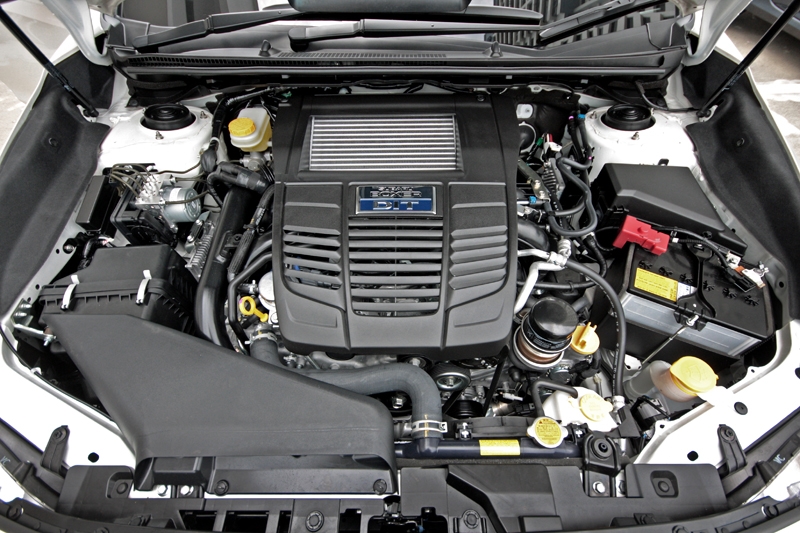
What powers them?
The Levorg gets all its power from a 1.6-litre turbocharged Boxer engine. Paired to Subaru’s Lineartronic CVT with seven virtual speeds, output is a respectable 168 bhp with maximum torque some 250 Nm. On paper, Subaru quoted a 0-100 km/h timing of 8.9 seconds while top speed limited to 210 km/h.
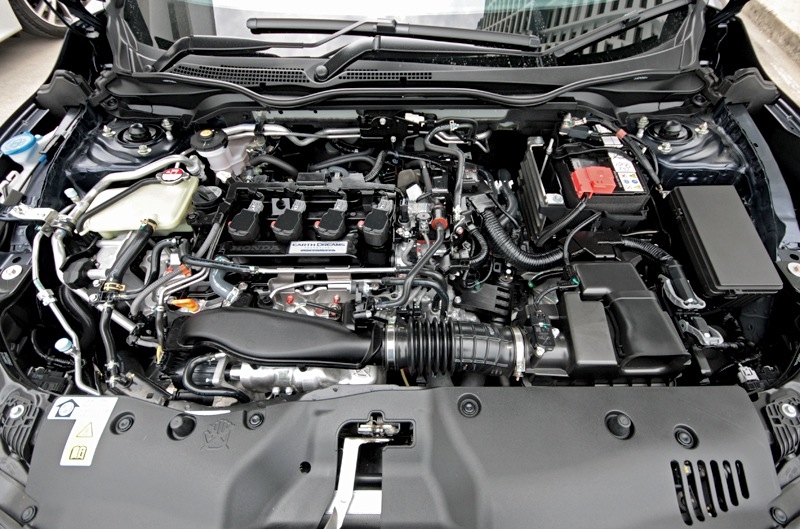
Honda should have put in more effort to make their engine bay neater; the Levorg's a prime example
Pop the Civic’s bonnet and you’re greeted by Honda’s proud new VTEC Turbo engine that has been matched to the brand’s Earth Dreams CVT. It whips out 170 bhp and 220 Nm of torque, and takes 8.6 seconds to reach 100 km/h from standstill, with top speed limited to 200 km/h.
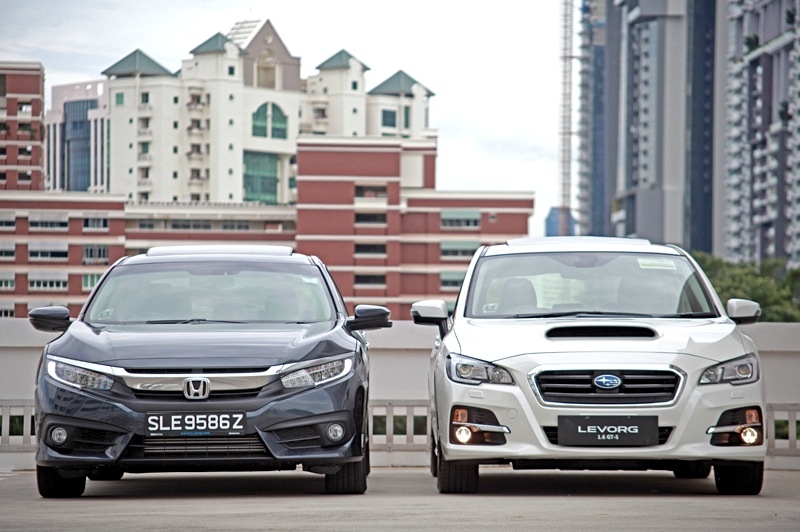
How do they drive?
If you’re expecting shove-you-into-the-seat sensation when you floor the accelerator, I’m sorry to report that both do not offer such antic. Instead they both work in a rather civilised and linear manner — power comes in steadily and you will not catch them running out of breath too early. So on that note, Honda and Subaru had both gotten their priorities right; after all when you have the family in tow, you do not want them to be thrown about like dummies.
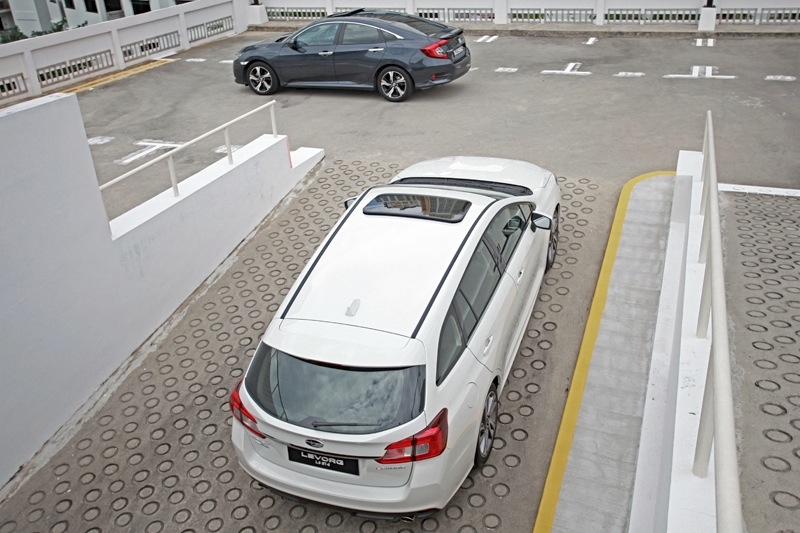
Between the two, it’s the Civic that feels quicker off the line, and this trait can be pinpointed down to the fact that it’s a front wheel drive, as opposed to the Levorg’s all-wheel drive; 227 kg separates the two. But when on the move, they both behave in the same manner — overtaking doesn’t require much effort and along the expressway, keeping up with higher-powered traffic ahead without any difficulty. Unfortunately even with the Levorg’s SI-Drive in Sport mode, it still doesn’t perform that differently from the Civic’s.
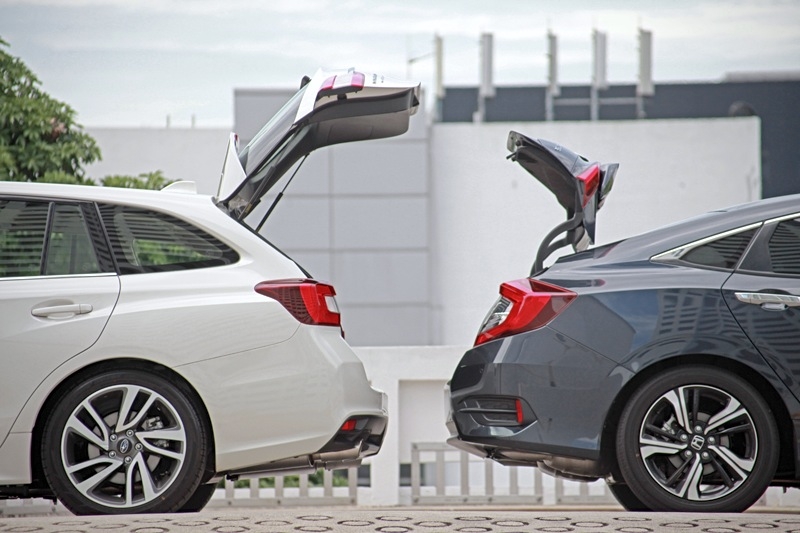
To wagon or to sedan, that is the question...
The Levorg is the sharper handler here, with the steering feeling more natural and weightier. The Civic is not that far off but unfortunately the electric steering makes it feel a tad superficial. For the daily grind, both also deliver similar level of comfort/sporty suspension balance and for that, Subaru and Honda deserve praises; again showing how both clearly understood their audience.
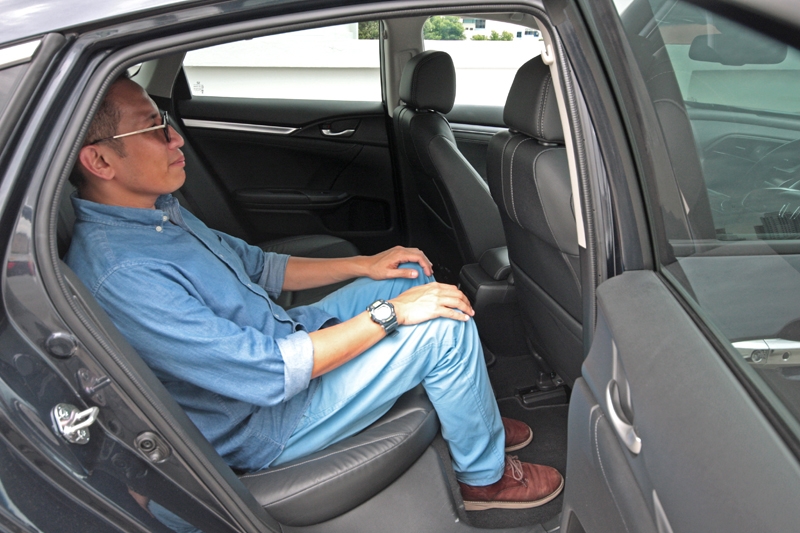
Civic's additional 50 mm wheelbase lead to more legroom
However, this is where the Civic needs to learn from the Levorg: NVH (noise, vibration, harshness). Driving along the expressway at 100 km/h, the Levorg’s cabin seem quieter, shutting out both tyre and wind noises. And while idling at the expressway, the Civic’s engine vibration gets to you and the occupants — Honda seriously need to relook the quality of their engine mounts deployed here.
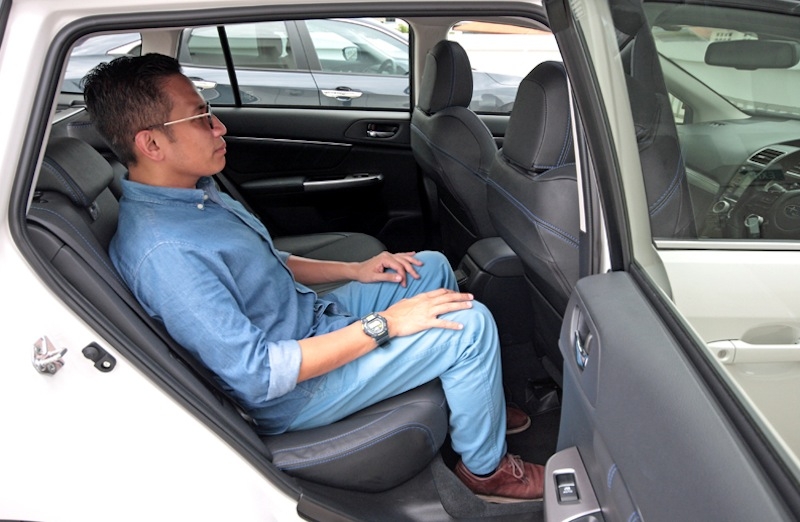
Levorg's additional 74 mm height allows more headroom; useful for taller passengers
There’s no clear winner or loser in this comparison, looking at how they both have their merits and weaknesses. Even if you were to put practicality as top priority, the wagon Levorg and Civic sedan is still not that far off — heck, even sunroof are standard on both. The only difference here is the standard equipment level (the Levorg is better equipped, a given due to its $3k difference).
And whether you’re a Honda or Subaru fan boy.
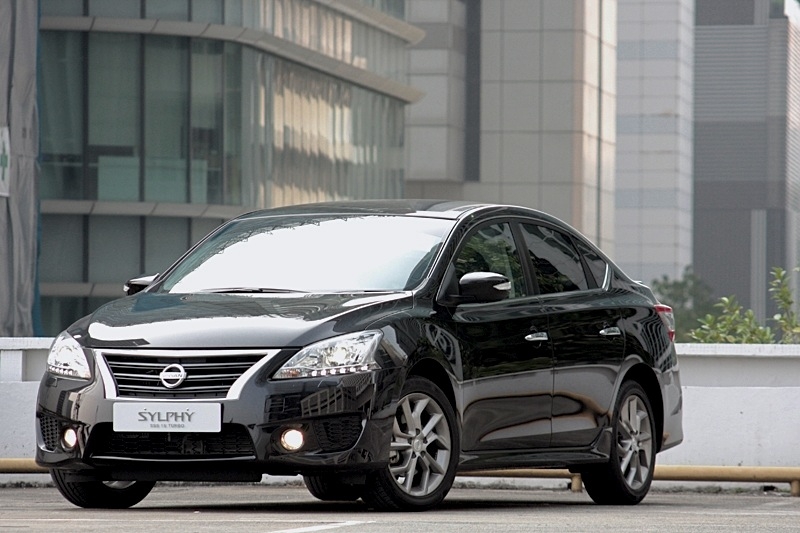
Another option is the turbocharged, 1.6-litre Nissan Sylphy SSS DIG-T. Although the interior does appear dated, it still offers well-appointed overall quality and spaciousness. Performance wise, there’s more verve all thanks to the fact that it whips out 190 bhp and 240 Nm max torque; respectable handling another plus point. Compared to the Honda and Subaru, it is also the fastest, taking 8.4 seconds to reach 100 km/h from standstill.
All those goodness comes at a price though: At $143k with COE, that’s almost $10k more than the Levorg and $12k pricier than the Civic.
